Within the Mattel toy universe, there's Barbie, there's "just Ken" ... and there are the dolls you completely forgot existed until seeing Greta Gerwig's "Barbie" movie.
"Barbie" features a few such of Mattel's most legendary flops, including Earring Magic Ken, Growing Up Skipper and Sugar Daddy Ken (it's a long story, which we'll get to below).
As narrator Helen Mirren said in the movie, some of these doll concepts were "just too weird." Indeed, viewers can spot several discontinued dolls living in Weird Barbie's house, a veritable Island of Misfit Toys.
From a pregnant doll to a dog named Sugar, here are some of Mattel's most infamous discontinued dolls.
'Happy Family' Midge
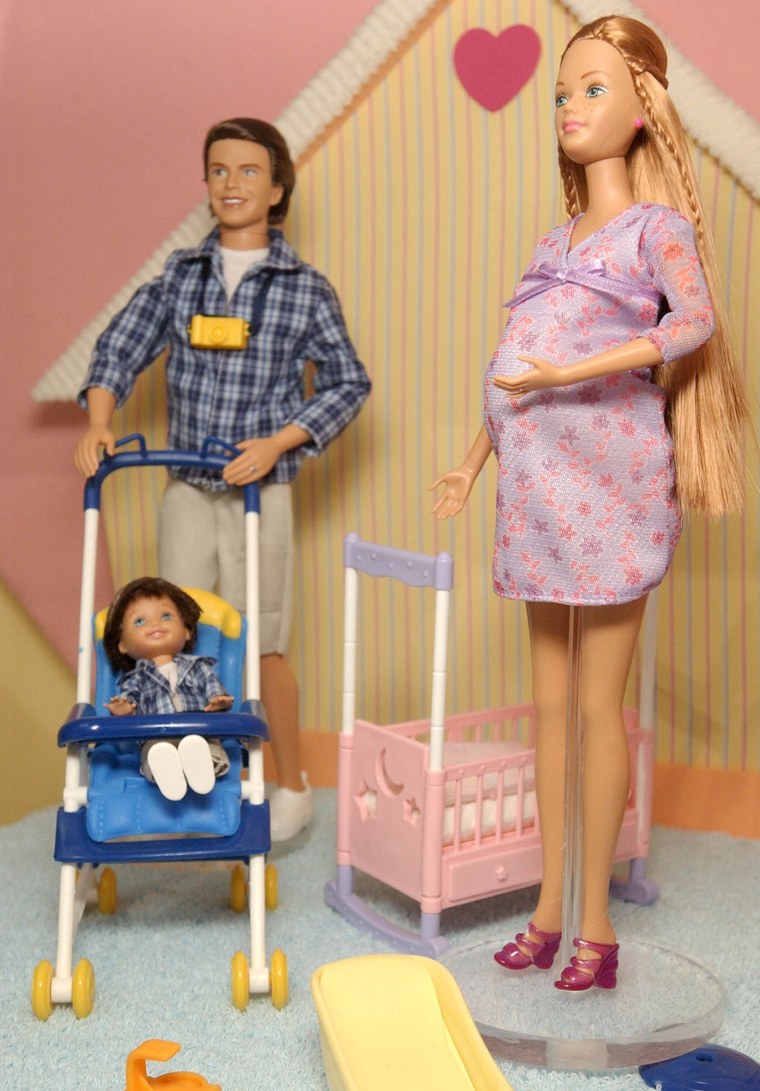
As Barbie (Margot Robbie) takes viewers on a tour through Barbie Land, one doll's appearance sticks out. Midge, played by Emerald Fennell, sports a huge baby bump as she eagerly waves to Robbie's stereotypical Barbie. The character is played for laughs, but casual "Barbie" fans may not know Midge's long, controversial history in the Barbieverse.
Margaret "Midge" Hadley Sherwood was created in 1963 as Barbie's plain-Jane best friend. Far less glamorous than Barbie, Midge was intended to represent a more average, accessible American girl.
For most of her existence, Midge led a quiet, unremarkable life with her beau Allan Sherwood, whose packaging described him simply as "Ken's Buddy." The plastic pair married in 1990, and enjoyed a brief moment in the spotlight with a "Wedding Party" set released the same year.
Midge and Allan's marriage opened up new avenues for the dolls, such as parenthood. Mattel released the "Happy Family" set in 2002, featuring a pregnant Midge with infant accessories and a "3-in-1 crib, table, and cradle," according to the box. "With this gift set, girls have everything they need to play out the arrival of a new baby," the box read.
Perhaps taking the "Happy Family" concept just a step too far, Midge had a detachable, magnetized pregnant belly that could fit her accompanying plastic infant.
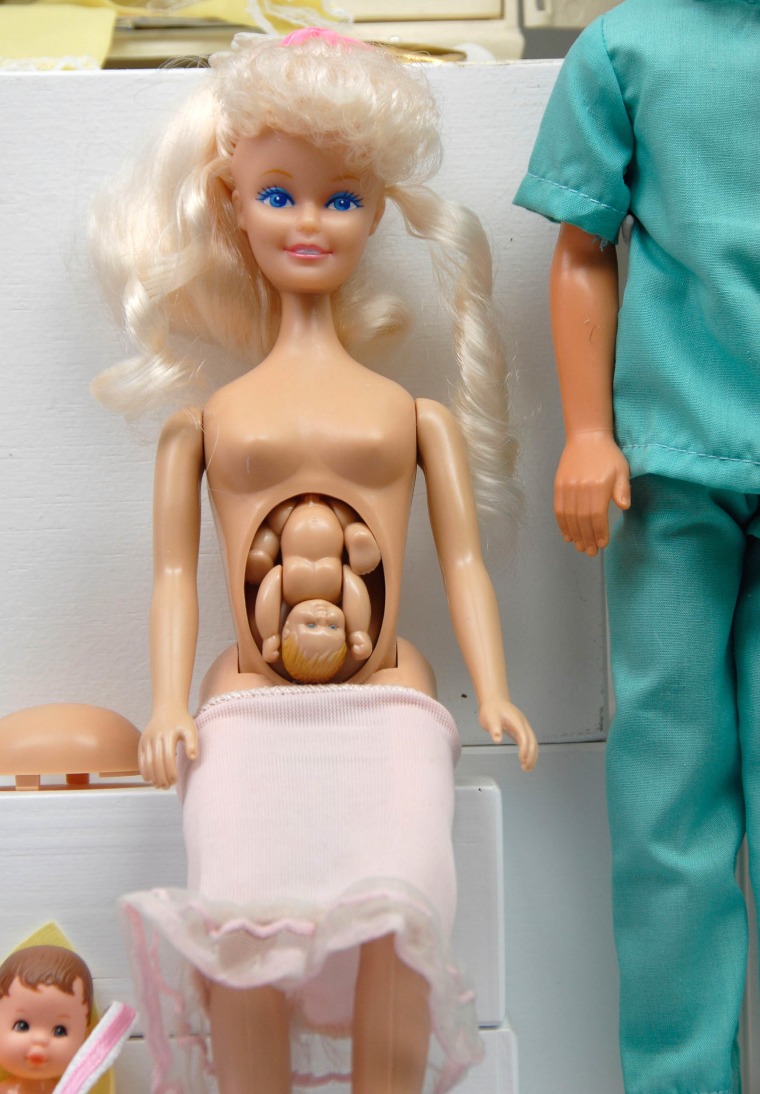
Midge's delicate condition sparked immediate backlash. Many real-life parents worried that Midge would promote teen pregnancy, or even single motherhood — Allan and the couple's other child, Ryan, were sold separately from Midge.
According to the Associated Press, Wal-Mart pulled pregnant Midge from shelves by December 2002 due to the controversy.
Mattel has never returned Midge or her baby to the doll lineup.
Allan
Allan, Midge's husband, has been similarly wiped from the records: The doll disappeared just two years after his release in 1964, reappearing only in the 90's. Played by Michael Cera in "Barbie," Allan has a much larger role in the film than he ever did in real life.
Though many versions of Ken have been created over the years, there has only ever been one Allan. His main claim to fame remains that he shares clothes with Ken.
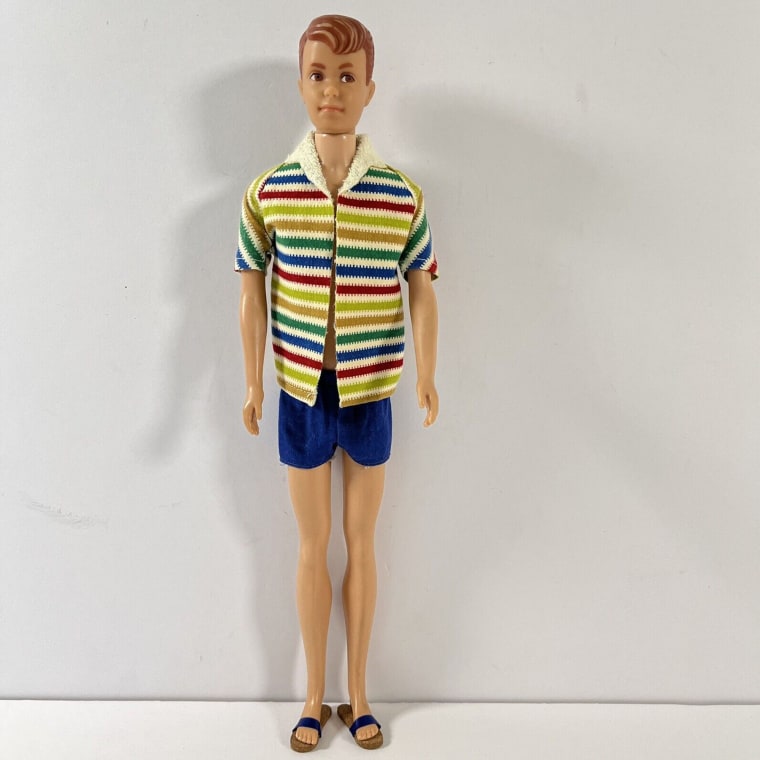
Earring Magic Ken
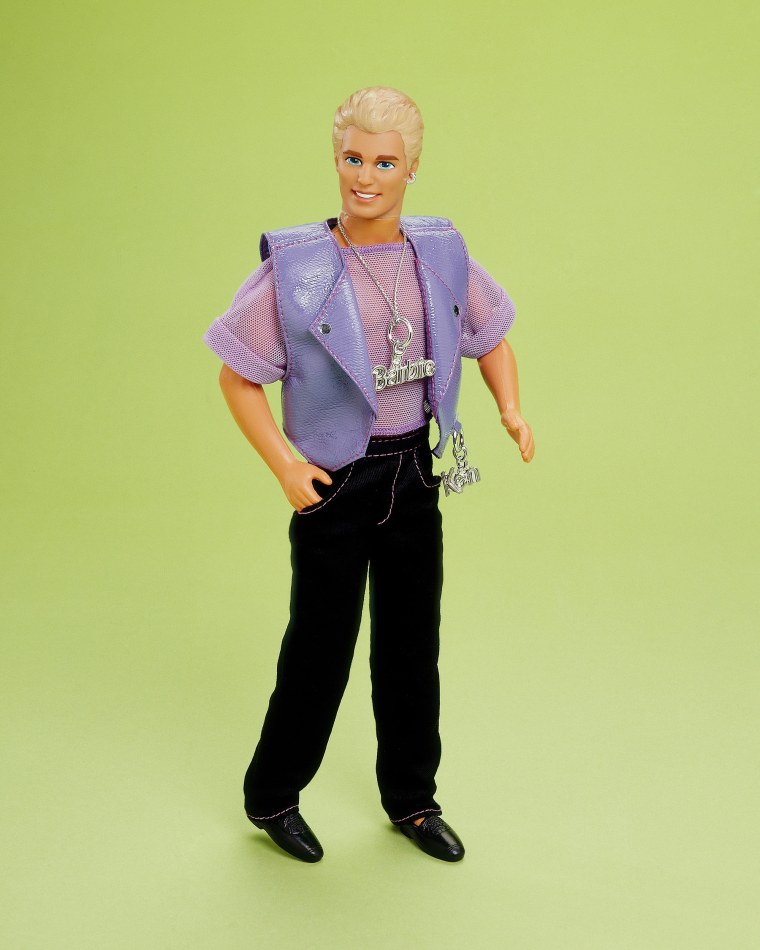
As seen in "Barbie," Ken frequently takes a back seat to Barbie. The movie's tagline says it all: "She's everything. He's just Ken."
For a brief, shining moment in the early 1990s, though, one Ken doll emerged as an accidental superstar.
"Earring Magic Ken," who debuted in 1993, was Mattel's attempt to jazz up Ken's squeaky-clean image, allegedly in response to girls requesting a "cooler" version of the character.
The doll sported bleach blond hair, a see-through purple mesh top, a lavender pleather vest, a rather unusual necklace, and of course, a single earring.
Reviewers were quick to point out that Ken’s outfit bore a resemblance to rave wear popular among gay men at the time.
“Ever since Mattel introduced Earring Magic Ken a few weeks ago, people have been wondering whether there’s something more in the Dream House closet than a few Bob Mackie originals and some two-inch-wide hangers,” journalist Frank DeCaro wrote in Newsday.
In the 90s, wearing a single earring was perceived as a way for gay men to secretly communicate their sexuality to each other. While Ken's earring was not on the right ear, which was the usual piercing location for signaling, Earring Magic Ken nonetheless evoked the practice.
It certainly didn't help that Earring Magic Ken's necklace, which had a large silver ring as the pendant, bore more than a passing resemblance to a sex toy.
In his now-infamous 1993 piece "Ken Comes Out," columnist Dan Savage speculated about Earring Magic Ken's sexuality and interrogated a Mattel representative about whether the company was aware of the doll's connotations.
“Absolutely not,” Lisa McKendall, a Mattel representative at the time, told Savage. “It’s a necklace. It holds charms he can share with Barbie. C’mon, this is a doll designed for little girls, something like that would be entirely inappropriate.”
Nonetheless, Earring Magic Ken became a coveted item for toy collectors who were amused by Ken's accidental foray into camp. On shelves for only six weeks, it became the best-selling Ken doll in Mattel history.
Played by Tom Stourton, Earring Magic Ken made a brief appearance in "Barbie" alongside another notorious Ken doll. Hint: his name is synonymous with "fructose father."
Palm Beach Sugar Daddy Ken
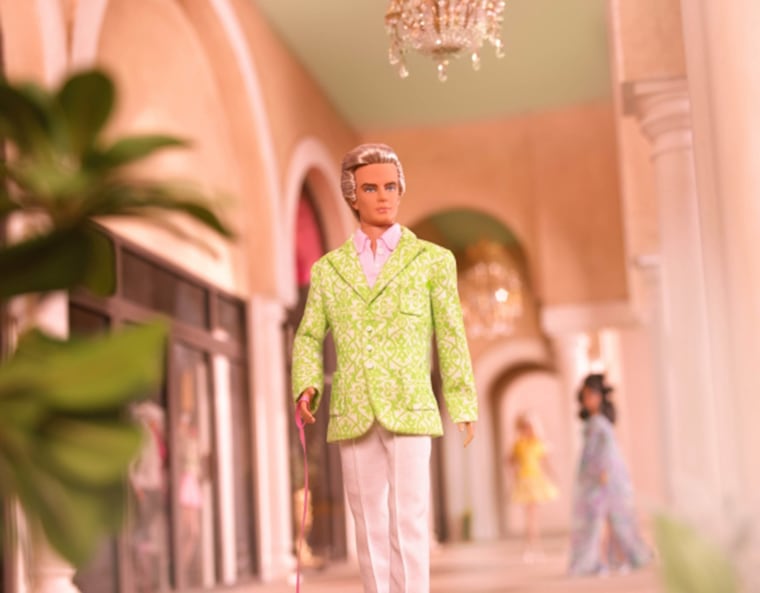
While Mattel might have pled ignorance about Earring Magic Ken, it would be difficult to contend that Mattel created a doll called "Sugar Daddy Ken" with zero knowledge of the term's implications. The doll was endorsed, satirically, by the website Seeking Arrangement, which facilitates "mutually beneficial relationships," the website says.
Palm Beach Sugar Daddy Ken debuted in 2005 as part of Barbie's 50th anniversary collection. He was dressed in a lime green damask blazer and crisp white pants, and he came with a dog named Sugar.
Thus, Mattel argued, he was called Sugar Daddy Ken because he was Sugar's ... owner?
“He’s Sugar’s daddy, as a reference to the dog,” a Mattel spokesperson told New York Post in 2009.
The doll was part of the adult Barbie Collector Line and not targeted at children.
Sugar Daddy Ken, played in the film by Rob Brydon, also made an appearance in Weird Barbie's house alongside his plausibly deniable pooch.
Growing Up Skipper
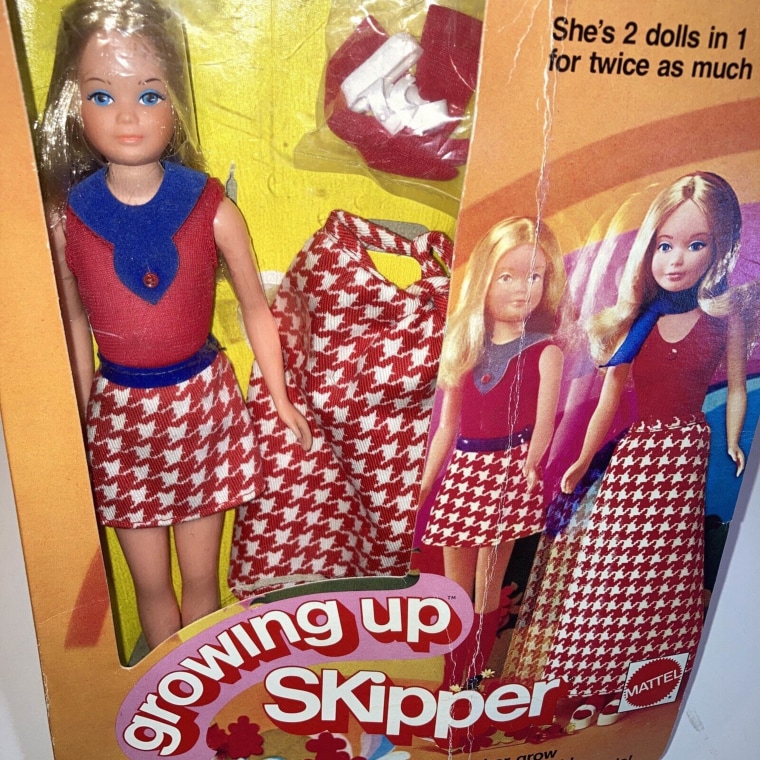
If you thought pregnant Midge was the apex of weird Barbie anatomy, "Growing Up Skipper" blows that plastic baby out of the water.
Skipper, for background, is Barbie's little sister. The first Skipper doll was released in 1964. Created as an 8-year-old character, Skipper had a notably more youthful, cherubic appearance than big sister Barbie.
Mattel decided that even plastic is not immune to the ravages of puberty. In 1975, the company released "Growing Up Skipper," a technological marvel of a doll that grew taller — and grew breasts — when users twisted her left arm. Rotating her arm backwards reversed the changes.
Growing Up Skipper's packaging described her transformation as going from a “cute, little girl” to a “tall, curvy teenager.” The commercial called it "two dolls in one."
Despite controversy, Mattel created another version of the doll concept called "Growing Up Ginger" in 1976.
The company eventually discontinued the "Growing Up" dolls in 1977, but Skipper continued to develop in subsequent versions of the doll. "Super Teen Skipper," created in 1979, retained the doll's aged-up appearance. "Hot Stuff Skipper" doll was released in 1985.
Growing Up Skipper, played by Hannah Khalique-Brown, makes a brief appearance in "Barbie" in which she demonstrates her shapeshifting capabilities to a horrified Gloria (America Ferrara) and Sasha (Ariana Greenblatt).
Video Girl Barbie
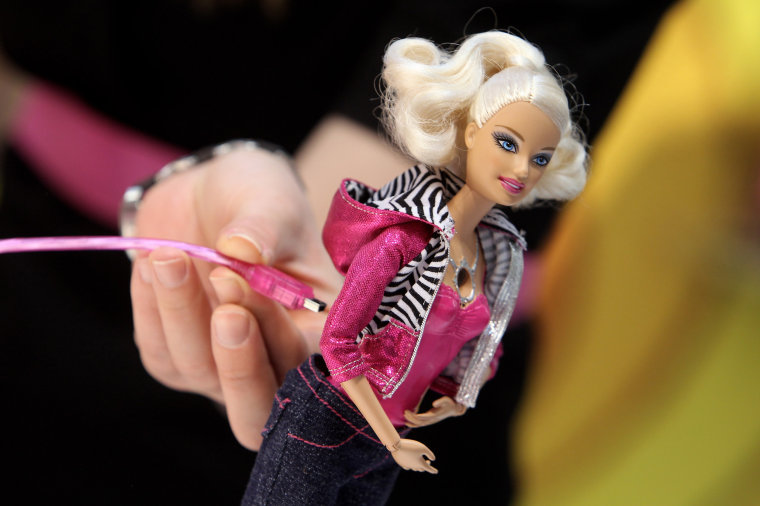
To round out the lineup of discontinued and disgraced dolls, we have Video Girl Barbie, who has the unique distinction of being the subject of a warning from the FBI.
Video Girl Barbie was a 2010 doll that featured a tiny front camera capable of recording up to 30 minutes of footage and a small video screen on her back.
The toy was ostensibly aimed towards "budding filmmakers," but it found its way onto the FBI's radar.
The FBI sent out a memo alerting law enforcement to the toy's potential for child abuse — namely child pornography — due to its hidden camera feature.
Though the FBI asserted that no such incident had yet occurred with the doll, the alert was quickly picked up by media.
“The alert’s intent was to ensure law enforcement agencies were aware that the doll, like any other video-capable equipment, could contain evidence and to not disregard such an item during a search,” the FBI explained in a statement.
Mattel also put out a statement clarifying the purpose of the announcement.
"The FBI is not reporting that anything has happened," the company said. "Steve Dupre from the FBI Sacramento field office has confirmed there have been no incidents of this doll being used as anything other than as intended. Mattel products are designed with children and their best interests in mind. Many of Mattel’s employees are parents themselves and we understand the importance of child safety — it is our number one priority."
The doll was discontinued in 2012, per Mattel.
Video Girl Barbie appears in the film along with the other discarded dolls in Weird Barbie's house.
She complains about her design to Gloria and Sasha.
"I have a TV on my back," she said. "You know who’s dream this is? Nobody. It’s nobody’s dream."
